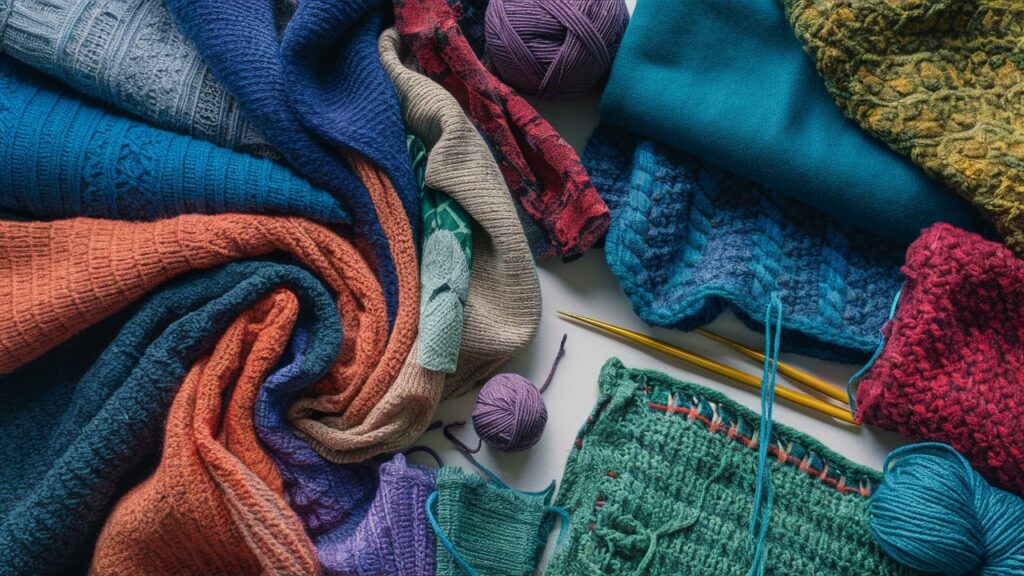Knitting fabric in Pakistan isn’t just about needles and yarn; it’s about weaving stories, memories, and warmth into every stitch. Whether you’re a seasoned pro or just starting out, the world of knitting fabric offers endless possibilities for creativity and self-expression. In this comprehensive guide, we’ll explore the ins and outs of knitting fabric, from basic techniques to advanced tips, so you can unleash your inner artist and create stunning masterpieces from scratch while delving into the rich cultural tapestry of Pakistan.
Table of Contents
| Sr# | Headings |
| 1. | Introduction |
| 2. | Understanding Knitting Fabric |
| 3. | Essential Tools and Materials |
| 4. | Basic Knitting Techniques |
| 5. | Exploring Different Yarns |
| 6. | Advanced Knitting Patterns |
| 7. | Troubleshooting Common Issues |
| 8. | Adding Personal Touches |
| 9. | Care and Maintenance |
| 10. | Knitting Fabric for Charity |
| 11. | Conclusion |
| 12. | FAQs: Getting Started |
| 13. | FAQs: Choosing Yarn |
| 14. | FAQs: Fixing Mistakes |
| 15. | FAQs: Adding Embellishments |
| 16. | FAQs: Caring for Your Knitted Creations |
Introduction
Knitting fabric has been a cherished art form for centuries, passed down through generations as a way to create warmth, comfort, and beauty. But beyond its practical benefits, knitting fabric is a deeply rewarding hobby that allows you to slow down, get creative, and make something truly unique with your own two hands.

Understanding Knitting Fabric
Knitting fabric is the process of creating textile structures by interlocking loops of yarn, using needles or machines. Unlike weaving, which involves perpendicular threads, knitting fabric forms a series of interconnected loops, giving it flexibility and stretchiness. This versatile technique can be used to produce a wide range of items, from cozy scarves and sweaters to intricate lace shawls and blankets.
Key Points:
- Knitting fabric involves interlocking loops of yarn.
- It offers flexibility and stretchiness compared to weaving.
- Can be used to create various items, from scarves to blankets.
Essential Tools and Materials
To get started with knitting fabric, you’ll need a few basic tools and materials. First and foremost, you’ll need knitting needles, which come in different sizes and materials. Choose needles that feel comfortable in your hands and suit the weight of your yarn. You’ll also need yarn, the lifeblood of knitting fabric. Yarn comes in a dizzying array of colors, fibers, and textures, so experiment until you find the perfect match for your project.
Key Points:
- Essential tools include knitting needles and yarn.
- Needles come in different sizes and materials.
- Yarn varies in color, fiber, and texture.
Basic Knitting Techniques
Before diving into your first project, it’s essential to master some basic knitting techniques. The two main stitches in knitting fabric are the knit stitch and the purl stitch. These simple yet versatile stitches form the foundation of all knitting patterns, so take the time to practice until you feel confident.
Key Points:
- Master the knit stitch and purl stitch.
- These stitches form the foundation of knitting patterns.
- Practice is key to mastering basic techniques.
Exploring Different Yarns
The type of yarn you choose can have a significant impact on the look and feel of your finished project. From luxurious cashmere to rugged wool, each yarn has its own unique properties and characteristics. Consider factors such as fiber content, weight, and texture when selecting yarn for your next knitting fabric adventure.
Key Points:
- Yarn choice affects the outcome of your project.
- Consider fiber content, weight, and texture.
- Experiment with different yarns to achieve desired results.
Advanced Knitting Patterns
Once you’ve mastered the basics, it’s time to level up your knitting skills with some advanced patterns. From intricate lacework to complex cables, the world of knitting fabric is full of challenges and opportunities for growth. Don’t be afraid to step out of your comfort zone and tackle a pattern that pushes your boundaries.
Key Points:
- Advanced patterns offer challenges and opportunities for growth.
- Experiment with intricate lacework and complex cables.
- Push your boundaries to expand your knitting skills.
Troubleshooting Common Issues
Even the most experienced knitters encounter obstacles from time to time. Whether it’s a dropped stitch, a tangled yarn, or a wonky tension, knowing how to troubleshoot common issues can save you time and frustration. Keep calm and carry on knitting, armed with the knowledge to tackle any problem that comes your way.
Key Points:
- Common issues include dropped stitches and tangled yarn.
- Learn how to troubleshoot problems effectively.
- Don’t let setbacks deter you from your knitting journey.
Adding Personal Touches
One of the joys of knitting fabric is the ability to add personal touches to your creations. Whether it’s a pop of color, a whimsical embellishment, or a heartfelt message knitted into the fabric, these little details can turn a simple project into a cherished keepsake. Get creative and make your knitting truly unique.
Key Points:
- Personalize your creations with unique touches.
- Add color, embellishments, or messages to make it special.
- Let your creativity shine through in every stitch.
Care and Maintenance
To ensure your knitted creations stand the test of time, proper care and maintenance are essential. Different yarns require different care instructions, so always check the label before washing or storing your knitted items. With a little TLC, your handcrafted masterpieces will bring joy for years to come.
Key Points:
- Follow care instructions for different types of yarn.
- Wash and store your knitted items properly.
- Take pride in preserving your handcrafted creations.
Knitting Fabric for Charity
Knitting fabric isn’t just a hobby; it can also be a powerful way to give back to your community. Many charities accept donations of knitted items, such as hats, blankets, and mittens, to help those in need. Get involved with a local knitting group or charity organization and use your skills to make a difference in the world.
Key Points:
- Donate knitted items to charities in need.
- Join a knitting group or charity organization.
- Use your skills to make a positive impact on your community.
In My Opinion
In my opinion, knitting fabric transcends mere hobby status; it’s a form of therapy, a way to connect with others, and a means of leaving a lasting legacy. With each stitch, you’re not just creating a garment; you’re weaving a story that will be cherished for generations to come, especially within the realm of hosiery garments.


